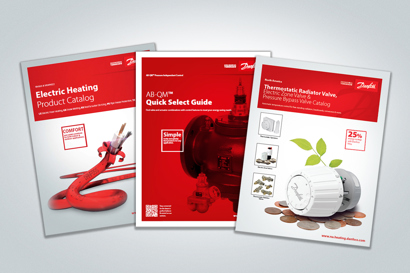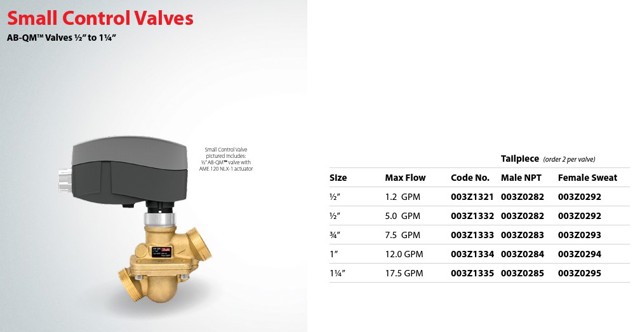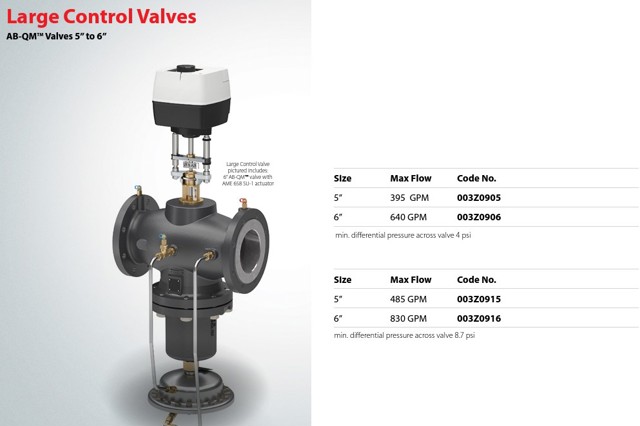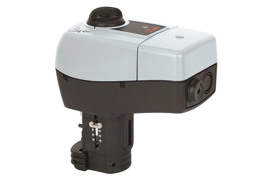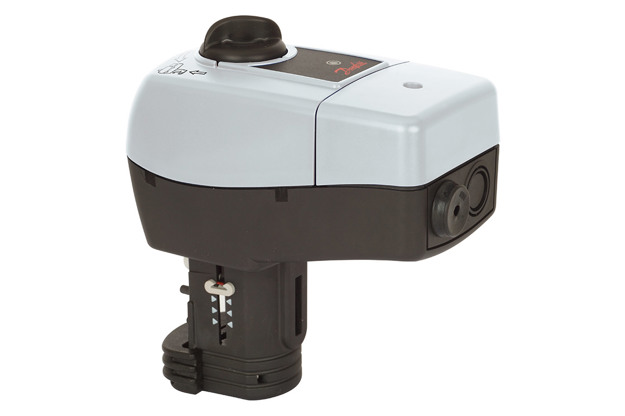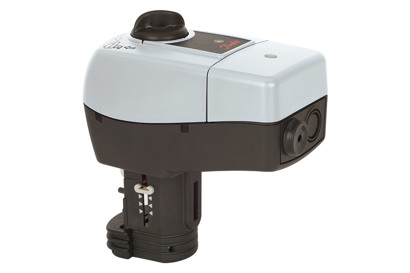
80+ Years of Sustainability
Danfoss has been engineering innovations designed to enhance comfort & save energy for over 80 years. Learn more about our sustainable building technology like AB-QM™ in our Sustainable Buildings video below...
AB-QM™ -
Simple, Affordable, Comfort.
Pressure independent control excellence from the global market leader for over 30 years.
Discover how Danfoss AB-QM™ Pressure independent control valves (PICVs) can improve system efficiency by eliminating overflows and increasing ΔT.
What is Danfoss AB-QM™ ?
AB-QM™ is a pressure independent control valve with a built-in, integrated differential pressure regulator. The unique design allows the valve to be selected via required flow versus traditional Cv calculations.
When equipped with a perfectly matched Danfoss electric actuator, AB-QM™ PICVs increase energy efficiency & room temperature control, improving indoor climate conditions. PICVs are typically found in HVAC heating and cooling systems.
Typical AB-QM™ PICV applications include:
- air handling units
- climate ceilings
- variable air volume boxes
- fan-coil units
- terminal units
AB-QM™ Features & Benefits

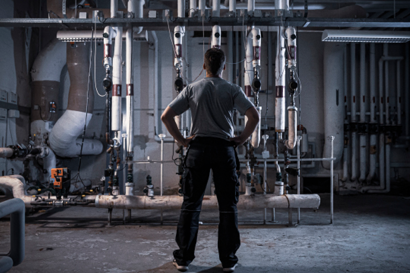
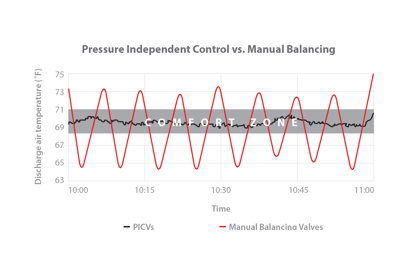
Mechanical pressure independent technology
Integrated differential pressure regulator for exceptional flow control.
Easy setting and sizing
Selecting the right AB-QM™ is much less complicated than sizing and selecting conventional control valves, and no Cv calculations are required.
Wide range of valve sizes
Valves are available in ½” through 10”, covering a wide variety of HVAC applications.
Field adjustable flow setting
No tools are required for the ½" to 1-¼" valves. Simply lift, rotate, and lock valve adjustment knob on your required flow setting.
Tight close-off/clog resistant
Unique two-stage close off resists debris.

Learn more about Danfoss AB-QM™ valves
Watch a brief overview of Danfoss AB-QM™ pressure independent control valves, see how they work, and how they can help optimize your HVAC system.
How it works
Pressure Independent Control Valve
The integrated control valve with flow limitation and automatically provides more or less flow through the valve depending on the selected actuator.
Product range
Related products
-
if (isSmallPicture) {


 AB-QM™ Actuators
AB-QM™ ActuatorsA variety of complimentary actuators are available that work synergistically with the AB-QM™ valve, maximizing the balancing & control features of the valve. Select your actuator based on your desired control input features for your application.
Documents

Find technical literature
Find links to all relevant technical literature including datasheets, case studies, instructions, and more.
Tender texts
Case studies
-
if (isSmallPicture) {


 The Verdict: Courthouse retrofit provides comfort, efficiency for occupants as well as a path to decarbonization
The Verdict: Courthouse retrofit provides comfort, efficiency for occupants as well as a path to decarbonizationWhen it began ‘raining’ in the Towson Court House a leaky roof was assumed to be the culprit, according to project leaders at the Maryland Department of General Services (DGS), the state’s property manager. For Courtney League, DGS’ Chief of the Facilities Engineering Division, and Harry Hughes, Project Manager for Design, Construction and Energy, the truth turned out to be much stranger.
-
if (isSmallPicture) {


 Engineering Tomorrow solves complex energy and comfort problems for elementary school
Engineering Tomorrow solves complex energy and comfort problems for elementary schoolBuilt in 1921, A.K. Suter Elementary School in Pensacola, Florida — like many older public schools in the state — used a retrofitted patchwork of packaged and split system air conditioning equipment to keep students comfortable in a warm, humid climate. In order to rejuvenate the almost 100-year-old school, the District decided in 2011 to tear down the old school and rebuild it from scratch using new, high-efficiency HVAC technology. Today, the brand new A.K. Suter Elementary is by far the most energy-efficient of all ECSD schools – thanks in part to advanced HVAC technology, including Danfoss Turbocor® oil-free centrifugal compressors and AB-QM™ valves.
-
if (isSmallPicture) {


 Outstanding HVAC flexibility after high-end office building renovation
Outstanding HVAC flexibility after high-end office building renovationBuilding: Office
Application: Hydronic balancing and remote control of 4-pipe heating/cooling change-over system
Challenge: Ensure a flexible to use HVAC system with DGNB sustainability certification
Solution: Digital NovoCon® actuator combined with AB-QM™ control valves and NovoCon® CO6 combined with ChangeOver6 as a combination balance the system hydronically, allow remote access via a BMS and control the room temperatures during both heating and cooling operation. -
if (isSmallPicture) {


 High-end climate solutions in Waldorf Astoria by Hilton, Amsterdam, the Netherlands
High-end climate solutions in Waldorf Astoria by Hilton, Amsterdam, the NetherlandsBuilding: Hotel
Application: Hydronic balancing and control for radiator heating and fan coil cooling
Challenge: Establish top level comfort and minimum energy consumption for heating and cooling
Solution: Fan-coil units for cooling; 8 heating risers and radiators equipped with Danfoss products. -
if (isSmallPicture) {


 HVAC control at Katowice business centre, Poland
HVAC control at Katowice business centre, PolandKatowice Business Centre is a modern office building where Danfoss hydronic balancing solutions are used; AB-QM™ balancing and control valves in combination with revolutionary NovoCon® actuators.
-
if (isSmallPicture) {


 Energy comfort in Prime Tower, Zurich, Switzerland
Energy comfort in Prime Tower, Zurich, SwitzerlandThe Prime Tower in Zurich is a building of many records. With its 126 meters it is the tallest building in Switzerland with 36 floors and 40,000 square meters accommodating mostly offices. And with its more than 6,000 AB-QM valves it is also one of the biggest heating and cooling installations ever designed and installed by Danfoss.
Videos
To view additional AB-QM™ videos please visit our support video page.
Support
